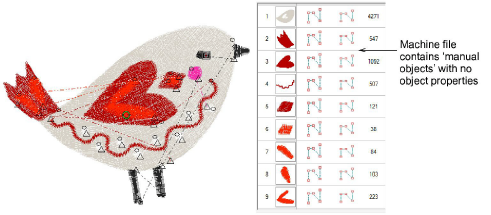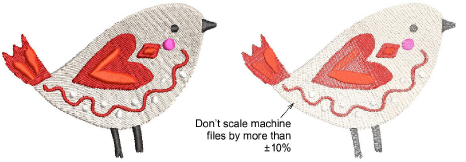
Different embroidery machines speak different languages. Also known as ‘stitch’ files, machine files are low-level formats for direct use by machines. They contain information about the position, length and color of each stitch. When read by the software, machine files do not contain object information such as outlines or stitch types, but present as a collection of stitch blocks also known as ‘manual objects’. Stitch blocks consist entirely of individual stitches.
Manual objects are created wherever machine functions – e.g. color changes or trims – are detected in the design. They have only general and connector properties. Manual objects, in turn, consist of individual stitches, called ‘manual stitches’. In the Sequence docker, manual objects and manual stitches appear as one-and-the-same thing.

You can scale raw machine files, but because the stitch count does not change, the density increases or decreases with the design size. Thus you should not scale these designs by more than ±10% or some areas may be too thickly or too thinly covered.
